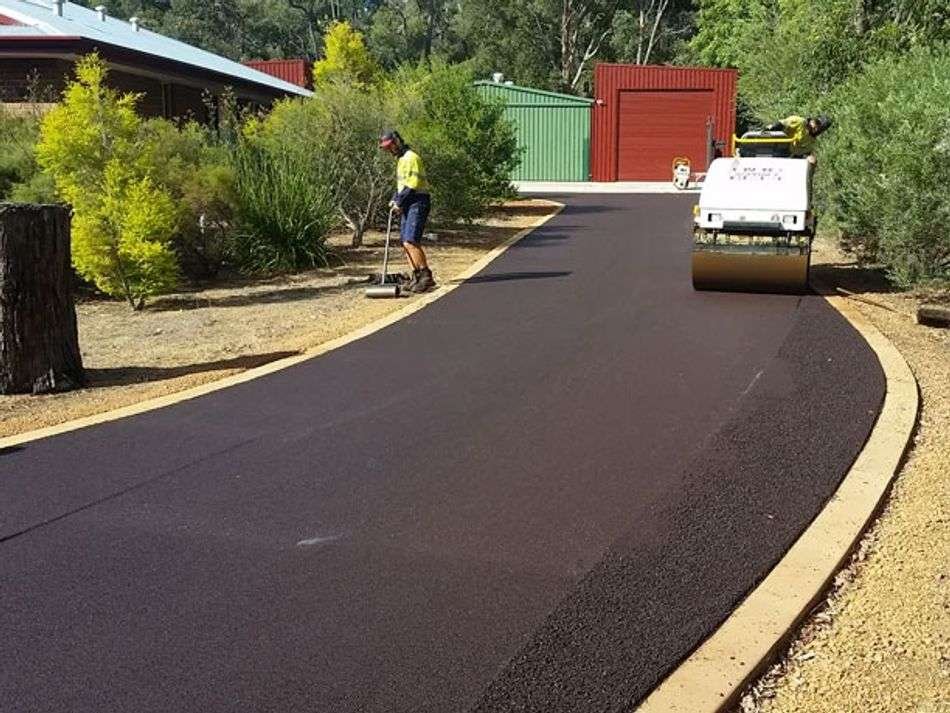A bitumen driveway, synonym for asphalt driveway, is a popular choice for many homes in Melbourne. As asphalt shields the driveway floors against moisture, wind, heavy rains, and transforms the enclosed area with vibrant colours, it can be a penny-saving measure.
However, despite its very nature, a bitumen driveway can turn into a rough playground when you fail to maintain them periodically. Asphalt’s protective nature can be misleading and people might assume that it will last long without a care. For this reason, understanding how to maintain a bitumen driveway is crucial.
Maintaining a bitumen driveway can make them functional and attractive which is why calling a contractor of bitumen driveway is helpful. In this blog, let’s explore essential tips to help you maintain your bitumen driveway, even though you are trusting a contractor in this case.
1. Regular Cleaning
Cleaning the bitumen driveways is the essential and most important step to keep them as a strong barrier and neat their appearance. If you are residing in an area where leaves, twigs, and grass pile up on the corners of the driveways, then clearing them off becomes the need. You can use a broom or a leaf blower to remove debris regularly.
If you can inspect that broken leaves and other waste are difficult to clean on your own, consider calling a professional for a pressure washing service.
2. Sealcoating
While bitumen itself is a strong material and proves to be efficient for driveway surfaces, it is still recommended to apply a sealant over it. More so as every durable material has a certain efficiency and lifespan, not maintaining the driveways surfaces with protective seal coats can be a blunder.
Sealcoating a driveway shields it from the elements, chemicals, and wear and tear. Depending on how frequently you are using a driveway and the current weather conditions in your location, you should seal coat the driveway after every 2-3 years. Sealcoating assures the year long damage protection and gives your driveway a fresh and new appearance.
It is advisable to call in a professional contractor specialising in bitumen driveway in Melbourne for the sealcoating process. But if you want to understand the process yourself, here are a few things to remember.
Steps to Sealcoat Your Driveway:
Prepare the Surface:
Clean the driveway completely and repair any cracks or potholes you see.
Start Applying the Sealant:
Use a high-quality sealant and apply it evenly using a squeegee or a sprayer.
Drying:
Allow the sealant to dry completely before using the driveway. This should take 24-48 hours. During this time, avoid driving or walking on the driveway.
3. Repair Cracks and Potholes Right As They Occur
Cleaning and sealing the asphalt driveways are some of the best ways to protect the delicate grounds. But even though you are consistently performing these maintenance tasks, heavy vehicles and truck overloads can crack and dig a hole on the bitumen surfaces.
For this reason, repairing cracks and potholes as soon as you notice them should be a priority. These are common issues with bitumen driveways, especially in regions with extreme weather conditions. If you left them too long, these small issues can expand, leading to more significant and costly repairs.
It is always efficient to call contractors like Roadseal concreting contractors, however understanding some tricks to repair them on your own is also a safe choice.
How to Repair Cracks?
Clean the Crack:
Remove any debris or loose material from the crack.
Fill the Crack:
Use a crack filler specifically designed for bitumen driveways. Apply the filler using a caulking gun or pour it directly into the crack, then smooth it out with a trowel.
Seal the Crack:
Once the filler feels dry, apply a sealant over this area to stop the water from going inside the cracks and corners.
How to Repair Potholes?
Clean the Pothole:
Remove debris and loose asphalt from the pothole.
Fill the Pothole:
Use a cold patch asphalt mix, fill the pothole in layers, and level each layer thoroughly.
Seal the Pothole:
Now you can begin to apply a sealant to the patched area to protect it from water and further damage.
4. Prevent Water Damage
Water is one of the biggest enemies of bitumen driveways. It can seep into cracks and then into underlying weak structures. For this reason, make sure that your driveway has an angled slope near the drainage system to prevent some corners and areas from collecting excess water pools. Additionally, keeping an eye out for drainage issues with the Roadseal concreting contractors can be helpful.
5. Avoid Heavy Loads
While bitumen driveways are durable, they are not designed to withstand excessively heavy loads for continuous time. Avoid parking heavy vehicles or equipment on your driveway for longer times. If you must use your driveway for such purposes, consider placing plywood sheets under the tires to distribute the weight more evenly to prevent hollow marks or dents.
6. Protect the Edges
The edges of your bitumen driveway are more sensitive to damage than the central areas. Avoid driving on the edges as these can crack or crumble after some use. If possible, create a border with bricks, stones, or concrete to provide additional support and protection for the edges.
7. Control Weed and Grass Growth
Weeds and grass can grow through tiny gaps in your driveway which can be a major concern over time. Regularly inspect your driveway for any signs of plant growth and remove weeds. One best way is to apply a weed killer along the edges and in cracks. Additionally, keep the surrounding area well-trimmed to keep away the seed growth.
8. Regular Inspections
Inspect your bitumen driveway to catch and address issues early before they become big problems. Look for signs of wear and tear, such as cracks, potholes, oil stains, and water stagnation.
Address any issues you find immediately to prevent further damage. Also, you can call Roadseal concreting contractors to inspect the prior or possible problems and tackle them proactively.
9. Avoid Using Harsh Chemicals
Avoid using harsh chemicals to clean oil and chemical spills from the bitumen surface. Instead, use a mild detergent and a stiff brush will wash off the stains. If stains are stubborn, chemical cleaners are also a good option.
10. Seasonal Maintenance
During spring, clean debris from winter, inspect for any damage, and repair cracks. In summers, applying sealants for Uv protection should be a priority. Likewise, the fall season demands removing leaves to keep the area clean. Keep your driveway clear of snow and ice in winters.
Use a plastic shovel over a metal one to keep the surface scratch-free. Avoid using salt or harsh deicing chemicals. You can rather use sand or kitty litter for traction.
Final Words
We hope you liked reading this blog. Maintaining your bitumen driveway doesn’t have to be difficult. With regular care and attention, you can protect your investment, save yourself from costly repairs, and keep the driveway in good condition for years.
Whether it’s through sealcoating, repairing cracks, or simply keeping it clean, every effort you put into maintaining your driveway pays off. Trust Roadseal Civil for laying and maintaining bitumen driveway in Melbourne.











